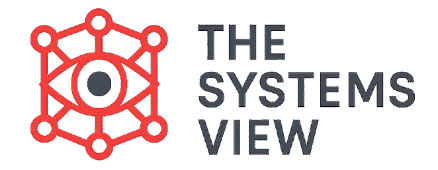In a world full of complex problems, it’s easy to get lost. We often deal with a challenge, fix it, and then see a similar problem come back later. Why does this happen? The answer is often that we are dealing with a recurring pattern, not a one-time event.
This is where Systems Archetypes come in. Think of them as blueprints or common story plots that show up again and again in organizations, societies, and even our personal lives. They help us understand the deep, hidden structures that cause problems to repeat. By recognizing these patterns, we can stop just putting out fires and start making real, lasting changes.
This article will introduce you to what systems archetypes are, and then briefly explain eight of the most common ones.
What are Systems Archetypes?
Systems archetypes are a tool from the field of Systems Thinking. They are simple stories or models that describe common patterns of behavior in a system. They are made of two basic parts:
- Reinforcing Loops: These are a cycle of cause and effect that makes something grow or get worse. For example, the more sales you get, the more money you have to hire more salespeople, which leads to even more sales. This is a reinforcing loop.
- Balancing Loops: These are a cycle of cause and effect that tries to keep something in balance or reach a specific goal. For example, when you get too hot, your body sweats to cool you down and bring your temperature back to normal.
Systems archetypes show us how these loops interact to create certain predictable, and often problematic, outcomes. The ebook you provided explains eight key archetypes that every problem-solver should know.
Important: The purpose of understanding systems archetypes is to help you see the hidden structures that cause problems. When you see the structure, you can find a “leverage point”—a place where a small change can create a big, positive difference.
The 8 Systems Archetypes
Here is a brief look at the eight core systems archetypes:
1. Fixes That Fail
This archetype happens when we try to solve a problem with a quick fix. The fix works for a little while, but it has a delayed, unwanted side effect that makes the original problem even worse later on. The cycle then repeats, with more quick fixes causing more long-term damage.
- Brief Example: A company has a big bug in its software. The developers release a quick patch to fix the bug, but because they rushed, the patch creates two new, bigger bugs that appear a few weeks later. The quick fix failed in the long run.
Read Fixes that Fail in more Detail
2. Shifting the Burden
This archetype happens when we use a quick, easy fix to solve a problem, but that fix only hides the real, deeper issue. Over time, we become more and more dependent on the quick fix, while the original problem gets even worse.
- Brief Example: A company has low sales. The quick fix is to give a big discount. This helps sales for a while, but it doesn’t fix the real problem, which might be a poor-quality product. Over time, the company can only get sales by offering more and more discounts.
Read Shifting the Burden in More Detail
3. Limits to Success
This archetype describes a situation where something starts with great success and grows quickly. But as it grows, it hits a limit that stops the growth. The success itself creates a force that slows it down and can even cause it to decline.
- Brief Example: A small consulting firm gets a great reputation and starts getting many new clients. But they don’t hire new people to handle the work. The existing team gets overworked, the quality of their work drops, and they start losing clients. The firm’s success created the limit to its own growth.
Read Limits to Success in More Details
4. Drifting Goals
This archetype happens when a group or organization cannot reach a goal, and instead of working harder to reach it, they simply lower the goal. Over time, the goals get worse and worse, and the group’s performance slowly declines.
- Brief Example: A factory sets a goal to produce 100 units a day. When they only make 80, the team decides that 80 units is “good enough” and sets the new goal to 80. The cycle continues, and the quality and production get worse over time.
Read Drifting Goals in More Details
5. Growth and Underinvestment
This archetype happens when a group is successful and growing, but they don’t invest enough in the infrastructure they need to handle the growth. The quality of the product or service suffers, and soon the growth stops.
- Brief Example: A new coffee shop is very popular and gets lots of customers. But the owner doesn’t hire more staff or buy a new coffee machine. Soon, the long wait times and poor service cause customers to go somewhere else, and the shop’s growth ends.
Read Growth and Underinvestment in More Details
6. Success to the Successful
This archetype happens when a limited resource is given to one of two competing people or groups. That person or group succeeds because they have the resource. Then, because they were successful, they get even more of the resource. The other person or group is left with nothing and fails.
- Brief Example: A manager gives a big project to their best-performing employee, John. John succeeds, so the manager gives him even more projects and resources. This makes John even more successful, while his coworker, Jane, has no chance to show her skills and improve.
Read Success to the Successful in More Details
7. Escalation
This is a pattern where two competing groups or people get into a fight, and each one takes an action to “win.” This makes the other side react even more strongly, and the cycle gets worse and worse. It’s like an arms race.
- Brief Example: Two rival companies start a price war. Company A lowers its prices to get more customers. Company B then lowers its prices even more. This continues until both companies are losing money and are stuck in a bad fight.
Read Escalation in More Details
8. Tragedy of the Commons
This archetype happens when a shared resource is used by many people. Each person acts in their own self-interest and uses the resource for their own gain. Over time, the shared resource is ruined for everyone.
- Brief Example: A group of fishermen all fish in the same lake. Each one catches as many fish as they can to make the most money. In a short time, there are no fish left, and no one can fish anymore.
Read Tragedy of the Commons in More Details
How Systems Archetypes Help Us
Recognizing these archetypes is the first step to solving a problem for good. When you see that you’re in a “Shifting the Burden” story, you know that the quick fix is not the real answer. Instead, you can look for the deeper, real solution.
Here is a deeper look at how these patterns help us:
- They provide a shared language: When a team is facing a problem, they can say, “It looks like we’re caught in a ‘Growth and Underinvestment’ loop.” This gives everyone a common way to talk about the problem, which helps them work together to solve it faster.
- They show us the real cause: Archetypes help us see past surface-level symptoms. Instead of asking “What went wrong today?” we can ask “What is the underlying structure that keeps causing this problem?” This helps us make more effective changes.
- They reveal leverage points: Because archetypes show us the whole system, they also help us find the best place to make a change. For example, in the “Shifting the Burden” archetype, the leverage point is not to find a better quick fix. The real leverage point is to work on the fundamental problem.
- They give us a better understanding of the future: Once you understand the pattern, you can often predict what will happen next. You can see the long-term consequences of a quick fix or a certain action. This helps you make smarter decisions now that will lead to better results later.
These patterns give us a common language to talk about complex problems and find leverage points to make a lasting, positive difference.
Frequently Asked Questions (FAQs)
What is the main difference between a Reinforcing Loop and a Balancing Loop?
A reinforcing loop is a self-growing cycle, meaning it causes a trend to accelerate or get worse. A balancing loop is a self-correcting cycle, meaning it tries to bring a system back to a specific state or goal.
Are there only eight systems archetypes?
These are the eight main archetypes that are most commonly used and were discussed in the ebook. There are other archetypes and variations, but mastering these eight gives you a strong foundation in Systems Thinking.
Can a system have more than one archetype at the same time?
Yes, it is very common for a real-world problem to involve more than one archetype working together. This is why it’s important to understand each one, so you can see how they are all interacting.
Conclusion
Systems archetypes are a powerful tool for understanding why problems repeat. They help us in identify and solve the problems. They help us see past the surface-level events and recognize the deeper patterns at play. By learning to identify these eight common archetypes, from Fixes That Fail to Tragedy of the Commons, we can begin to change the underlying structures of our systems. This allows us to move from reacting to problems to creating real, long-term solutions.



